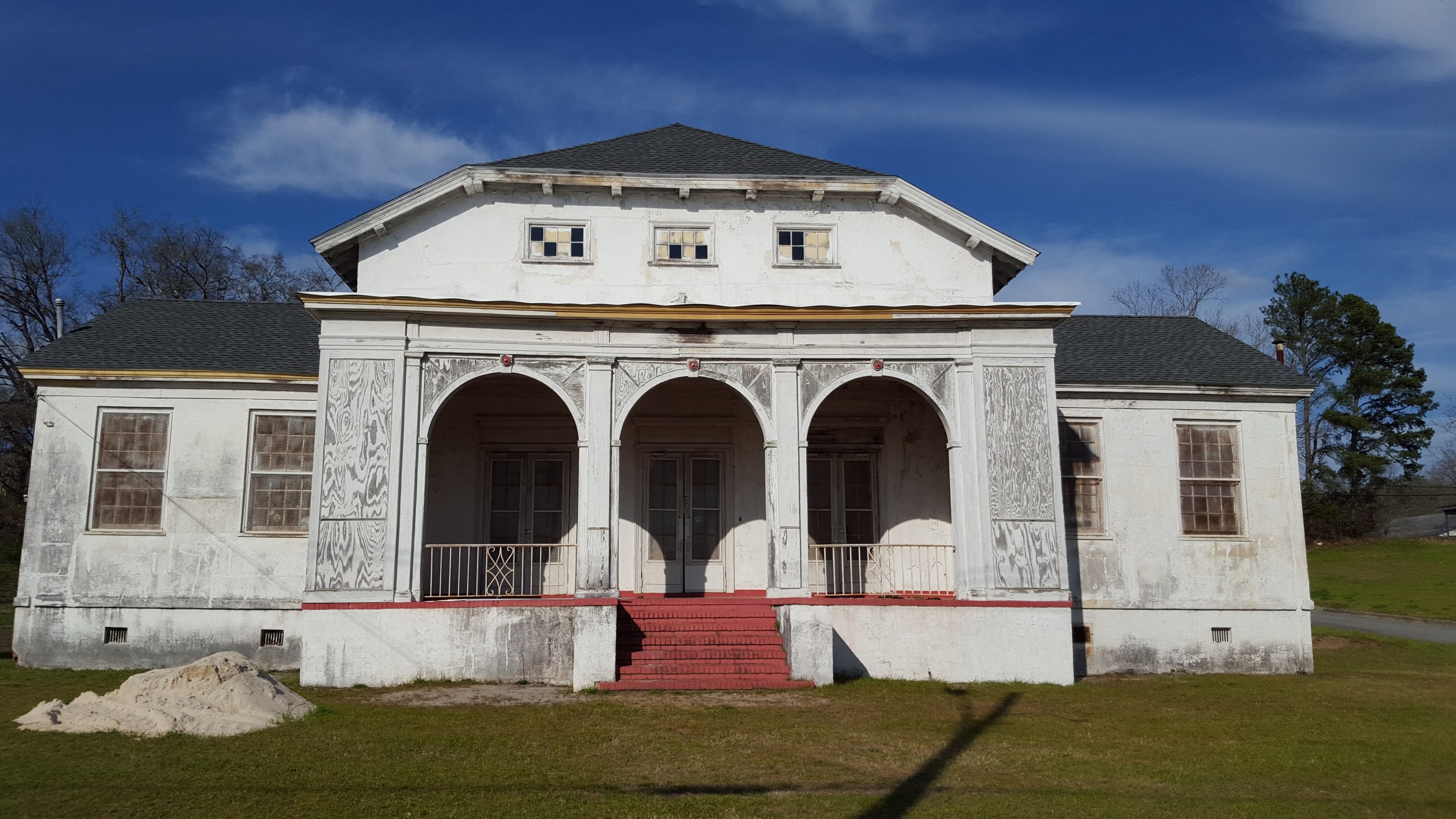
Residents will help turn ‘Birthplace of Macon’ into an arts village
Above: The former Bibb Mill auditorium, will become the Mill Hill Community Arts Center. Courtesy Macon Arts Alliance.
In just a few days, artists Samantha Hill, of Chicago, and Ed Woodham, of New York, will move into Macon’s Fort Hawkins neighborhood, to become artists-in-residence. Together, they will be engaging residents in creating a vision for turning the “Birthplace of Macon” into Mill Hill: East Macon Arts Village.
New funding from Knight Foundation to the Macon Arts Alliance is helping to promote this broad-based resident engagement, by matching a National Endowment for the Arts Our Town grant for a neighborhood and cultural district planning process. The grant also funds the establishment of a Community Land Trust for the area, which will help maintain Mill Hill as an affordable place to live, especially for those who have long resided there.

Green Team walking from interview. Photo via Macon Arts Alliance.
Once a village for people working at a local mill, the Fort Hawkins neighborhood is now 46 percent vacant and blighted. Disconnected from the economic drivers around it, we hope that Mill Hill will be a catalyst for economic opportunity. It’s all part of the Macon Action Plan, a comprehensive roadmap for the city’s urban core led by the Macon-Bibb County Urban Development Authority.
The Mill Hill initiative is a resident and partner-led planning process for creative placemaking, which focuses on developing vibrant public spaces where the community can meet and connect. We’re using an asset-based framework centered on building a community from the inside out, using the strengths of local people and places for more equitable and sustainable community development.
Identifying local assets began with the Macon Roving Listeners, a group that hires youth and adults with and without disabilities, to listen to the stories of their neighbors and identify their gifts, talents and passions. At community dinners, the Roving Listeners bring neighbors together around shared interests to teach and learn from one another. The collection of stories about the neighborhood, the people and their gifts is compiled to create the “asset map.”
Soon, the Mill Hill Visiting Social Practice Artist Program will bring together socially engaged artists from around the U.S., starting with Hill and Woodham, to work with residents and local artists to activate and celebrate neighborhood stories and existing strengths. Using the asset map, collaborators will identify and celebrate cultural narratives within the neighborhood, engage imaginations, and create positive momentum. Artists and neighbors will work side-by-side as agents of change.
The Mill Hill partners believe in a holistic approach to community development that is inclusive of all community members. Efforts to foster economic development should serve as a catalyst for the entire neighborhood, creating jobs that can be filled by neighborhood residents. Both the Roving Listeners and visiting artists play key roles as community builders in this process.
Three catalytic investments will also help forward our goals. The Clinton Street Gateway Park is a new, neighborhood park under development by the Urban Development Authority and its partners. This new amenity will be a shared space for residents, artists and visitors that strategically connects the neighborhood to adjacent tourism assets such as the Macon Convention Center and the Ocmulgee National Monument. The former Bibb Mill auditorium, constructed in 1920, will become the Mill Hill Community Arts Center, a place for artists, residents, and visitors to build and strengthen community ties. Vacant mill houses on the two streets immediately behind the arts center will become artist live/work housing. These investments will reduce blight and create a hub for creative and economic activity in East Macon.
Early in the Mill Hill planning process, community members, partners and funders were concerned about displacing existing residents. While there is no magic solution, there are mechanisms to mitigate the chances of displacement. The Mill Hill partners believe that an inclusive, asset-based approach leads to more equitable outcomes, reducing the chances of displacement. Additionally, the Community Land Trust creates a mechanism for maintaining affordability and land stewardship long-term.
The Mill Hill neighborhood and cultural district planning process engages residents and artists as collaborators in a shared vision for the future so that all voices are recognized and included in the decision-making process. A completed plan will be published in September 2017. We look forward to working together to make that shared vision a reality.
Jonathan Harwell-Dye is director of creative placemaking for the Macon Arts Alliance.